- India
- International
If your new graphics card is running at 8x speeds, here are some troubleshooting tips
Here are a few troubleshooting techniques you could try if your graphics card is not running at the optimal 16x speeds.
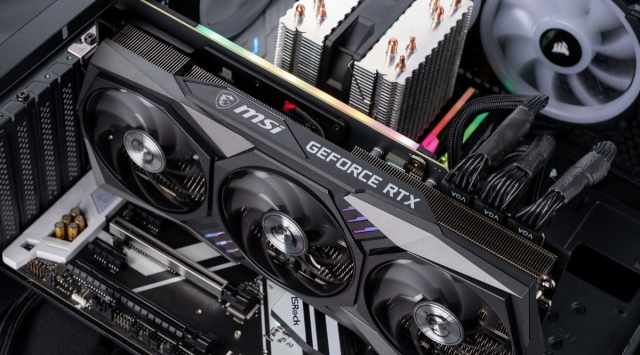 If your new graphics card is running at 8x speeds, here’s what you could try. (Image credit: Newegg)
If your new graphics card is running at 8x speeds, here’s what you could try. (Image credit: Newegg)One of the finer joys of building a gaming PC is installing your brand-new graphics card – the device that throws a display on your screen and lets you run games at better resolutions and settings. Much like every other desktop component, these cards are also guilty of not posing any problems until you go searching for them.
Sometimes, GPUs (Graphical Processing Units) tend to run at slower speeds (8x or below), right out of the packaging. This could be for a range of reasons like motherboard issues, faulty GPU, or even issues with your CPU’s PCIe lanes. So, we have listed below a number of troubleshooting techniques for you to resolve speed-related issues with your new graphics card.
How to check if your graphics card is running at the desired speeds?
Using a free, downloadable software called GPU-Z, one could check the specifications or other details such as its validation, memory clock, and temperatures. Now, if you head over to the Bus Interface section, you’ll be able to see details regarding the interface and the bandwidth.
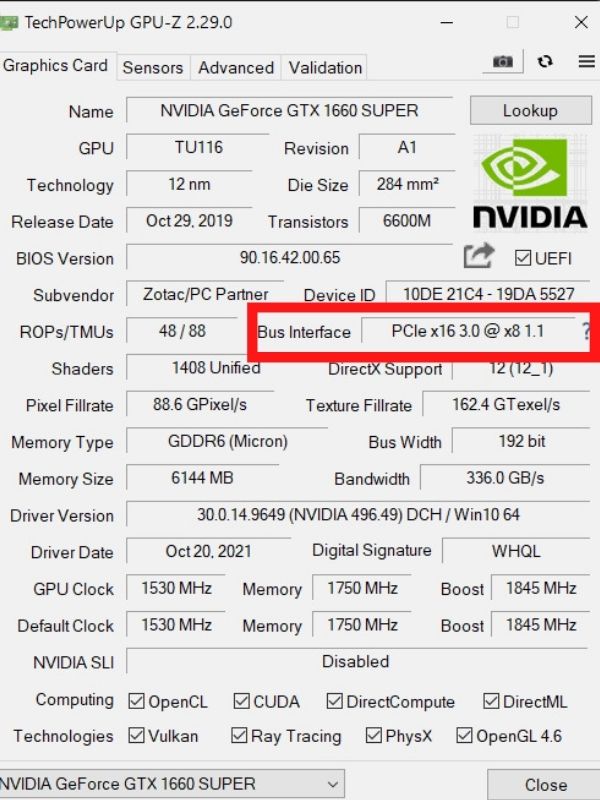 GPU bandwidth stuck at 8x. (Screenshot)
GPU bandwidth stuck at 8x. (Screenshot)
Here, if you see the value as “PCIe x16 3.0 @ x16,” then everything is working as intended. If not, you might end up seeing an “x8” at the end, which is half the speed. Most modern GPUs tend to set speeds at the lowest possible value under light loads. So, we could run a stress test to check if the value rises under increased loads.
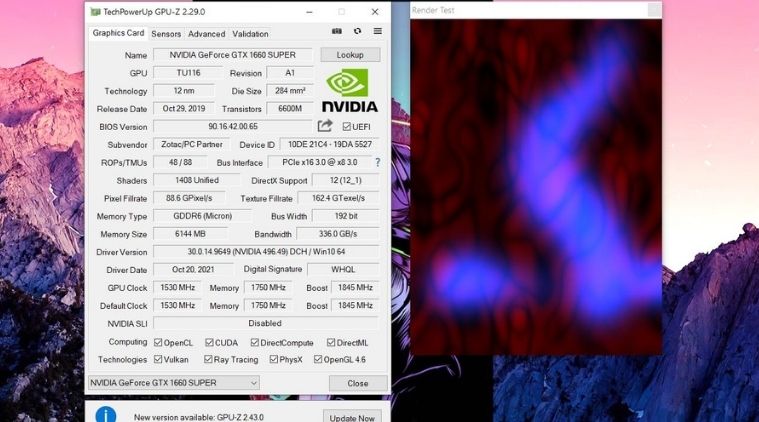 Clicking the question mark (?) icon right next to the bus interface information loads up a render test. (Screenshot)
Clicking the question mark (?) icon right next to the bus interface information loads up a render test. (Screenshot)
This could be done by clicking the question mark (?) icon right next to it, which opens up a render test on a separate window, taking the GPU usage to 99 or 100 percent. During this process, if the value changes to “x16,” you are good. If not, you need to find what’s causing the issue.

Check GPU installation
The first thing to do would be to check whether the GPU is installed on the topmost PCI-E x16 slot. Since most modern motherboards come with more than one PCI-E slots, then the first one runs at the maximum bandwidth, which is 16x. The second slot, however, runs at 8x speed only.
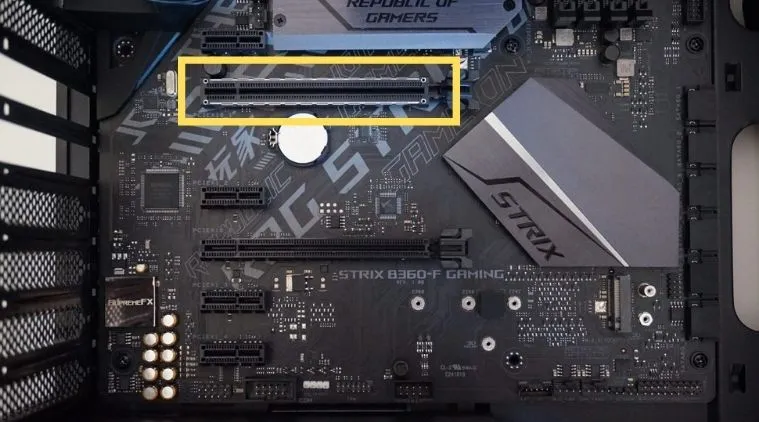 Make sure your graphics card is installed on the topmost slot i.e., the one with x16 PCIe lanes. (Image credit: Rock Paper Shotgun)
Make sure your graphics card is installed on the topmost slot i.e., the one with x16 PCIe lanes. (Image credit: Rock Paper Shotgun)
Sometimes, the simplest things like dust particles or remnants of warranty stickers could lead to this issue. Reseating the GPU after cleaning the connector contacts with isopropyl alcohol or an eraser is a great way to get rid of the impurities and some of the carbon. It’s also advised to make sure that the slot on the motherboard is clean, which can be achieved by blowing compressed air.
If your GPU requires external power connectors, then make sure that they are plugged in properly. Normally, if the 6-pin or 8-pin PCIe connector is not fully plugged in or is faulty, the computer refuses to boot. However, there are cases where the GPU will still work but run at relatively lower speeds.
Shared PCI-E Lanes
An NVMe SSD installed on your computer could consume some of the PCIe lanes of the CPU, causing your card to run at 8x speed instead of 16x. Unless your operating system is installed on the NVMe SSD, which in most cases is, you could try removing it from the motherboard and check if the issue still persists. If not, then it’s probably due to other expansion cards such as a sound card, network card or an internal capture card.
APU paired with a GPU
If you have an APU (CPUs that come with built-in display) paired with a GPU, you are very likely to encounter this problem. Most lower-end APUs have fewer PCIe lanes than CPUs. If we take AMD’s Ryzen 3 2200g or a Ryzen 5 2400g with Vega graphics as an example, you’ll notice that they only have 12 PCIe lanes. 8 of which are reserved for the graphics card, while the remaining 4 are for storage (NVMe SSD).
Now, if you compare this to a CPU without display like AMD’s Ryzen 5 1600 or a Ryzen 5 2600, you’ll notice that these have 20 PCIe lanes. Out of which 16 is reserved for the discrete graphics card, while the remaining 4 lanes are reserved for storage. So, the only way for a low-end APU owner to get full speed (x16) is by getting a new, more powerful CPU.
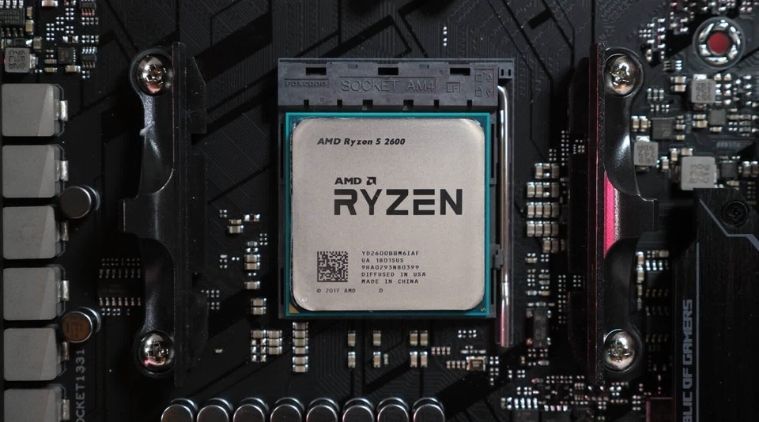 Better processors such as the Ryzen 5 2600 have 20 PCIE lanes – 16 for graphics card and 4 for storage. (Image credit: TechSpot)
Better processors such as the Ryzen 5 2600 have 20 PCIE lanes – 16 for graphics card and 4 for storage. (Image credit: TechSpot)
Even then, in most cases, this problem only exists if you pair an NVIDIA card with an AMD APU. Pairing an AMD card with an AMD APU should not bring this problem to the surface. The AMD to AMD pairing will take advantage of an 8x + 8x GPU configuration resulting in a total of 16x speed.
Intel CPUs, on the other hand, do not consume PCIe lanes while active. So, it does not matter whether it is paired with an NVIDIA or an AMD GPU. As long as it’s installed on the topmost slot, it should run at 16x speed.
Disable USB 3.0 Turbo
The Turbo feature consumes the CPU PCIe lanes at the expense of some added boost in USB 3.0 speed. This consumption could then result in slower GPU speeds. The feature is available on most older Gigabyte motherboards and can be disabled via the BIOS, under the Integrated Peripheral section.
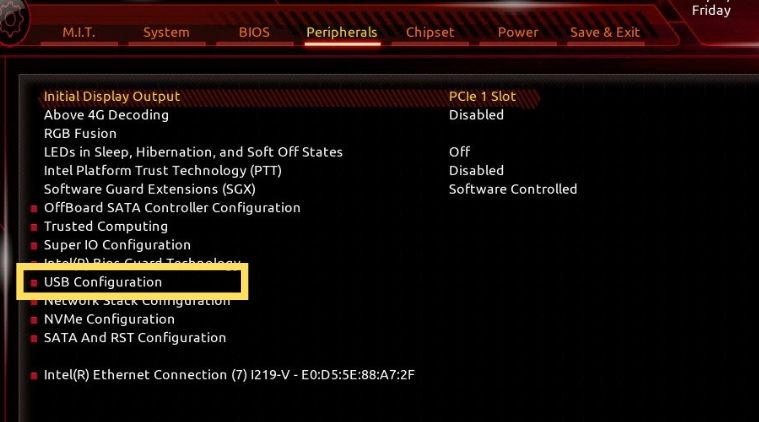 GIGABYTE BIOS – USB Configuration under the Peripherals tab. (AnandTech – Screenshot)
GIGABYTE BIOS – USB Configuration under the Peripherals tab. (AnandTech – Screenshot)
Update BIOS
Finally, you could try updating the motherboard BIOS. Using a USB flash drive, you can download the latest bios from your motherboard manufacturer’s website and safely boot into your PC to install it. Updating the BIOS also has a bunch of advantages to it including security fixes and support for newer hardware. Just make sure you don’t lose power or are hooked to a UPS during the updating process. Loss of power midway could lead to your motherboard getting hard-bricked.
If none of the above methods work, it could mean that either your motherboard or your graphics card itself is faulty. And even then, the difference in speeds isn’t all that noticeable. If your system’s PCIe generation is 3.0 or above, the performance difference between an x8 and an x16 configuration is merely 1 to 2 percent at most. That too, when observed at 1440p gaming. Even a high-end graphics card such as an RTX 3080 hasn’t been able to saturate the entire x8 lane. A Titan V, however, can do it, albeit just barely.
More Tech
May 06: Latest News
- 01
- 02
- 03
- 04
- 05






































